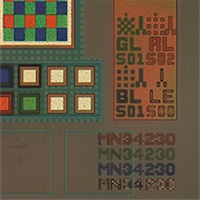Olympus OM-D EM-1 sensor is made by Panasonic, not Sony
posted Monday, February 10, 2014 at 1:22 PM EST

When Sony invested more than $600 million into Olympus in late 2012, everyone assumed that would mean that Olympus would be using Sony sensors for most of its cameras. The OM-D E-M5 used a Sony sensor, and had some of the best performance for Micro Four Thirds camera available. But Chipworks has discovered something fascinating: the followup OM-D E-M1, which had even better image quality than the E-M5, has a sensor that's made by Panasonic, not Sony.
Chipworks specializes in taking apart gadgets, and figuring out where all the parts come from, thanks to their original die markings. What they discovered is "the Olympus OM-D EM-1 contains a Panasonic 34231 (MN34230 die markings) CMOS Image Sensor with on-chip phase detection pixel array."
This comes as a substantial surprise, as everyone (ourselves included) thought that the close relationship between Sony and Olympus meant that the latter would keep tapping the former for its sensors. As our own Dave Etchells commented when the Sony/Olympus partnership was announced:
"The most obvious benefit for Olympus cameras will be Sony sensors. The highly acclaimed Olympus OM-D EM-5 used a Sony sensor for the first time in an Olympus camera (at least, that we're aware of), resulting in superlative image quality. Sony is arguably the world's leading imaging sensor maker, so the closer ties with Olympus will doubtless mean Sony sensors in many or all of Olympus' cameras going forward."
We were hardly the only people to assume that the E-M1 would contain a Sony sensor. Now, some people (like commenters here) are wondering if the Panasonic sensor might explain why Olympus cameras are faster to focus than some of Sony's offerings—though we wouldn't bet on that. The E-M5 was pretty damn speedy, and it definitely used a Sony part.
If nothing else, this shows that even though Sony invested a significant amount in Olympus, Olympus is still choosing the components that suit its cameras best, regardless of who made them.
(via FotoActualidad)